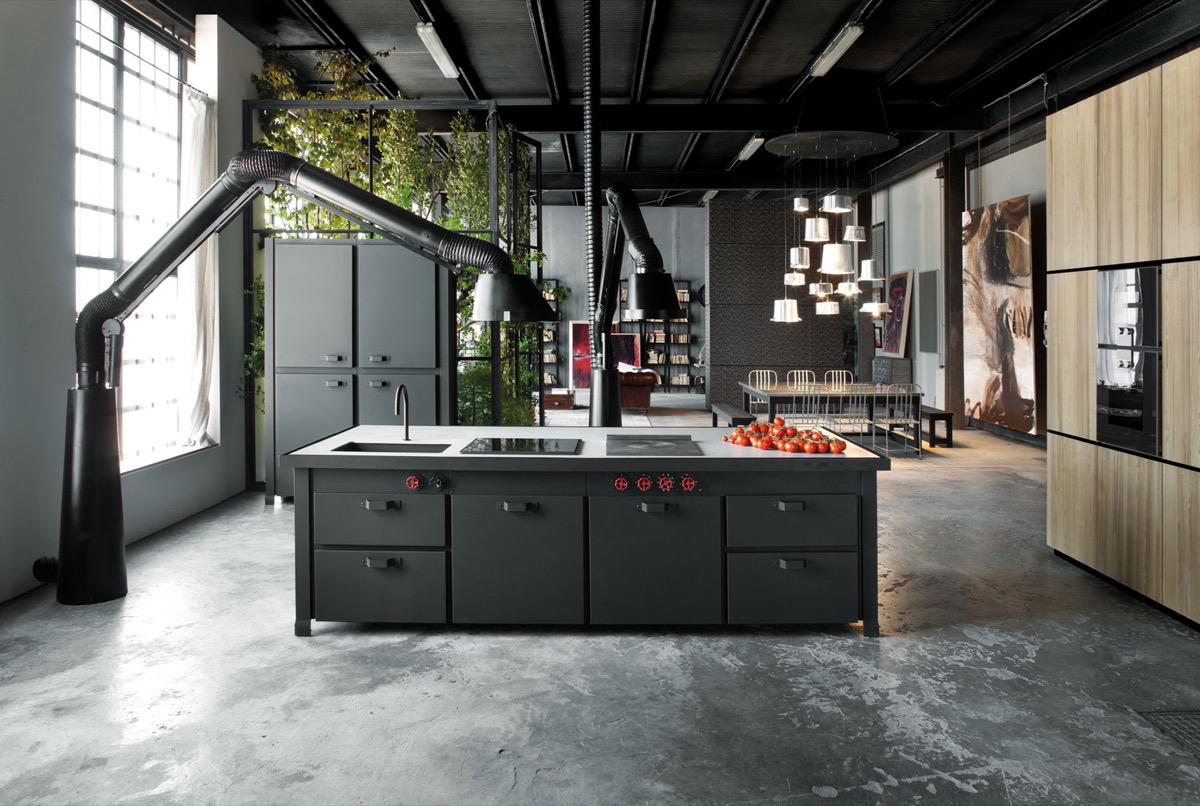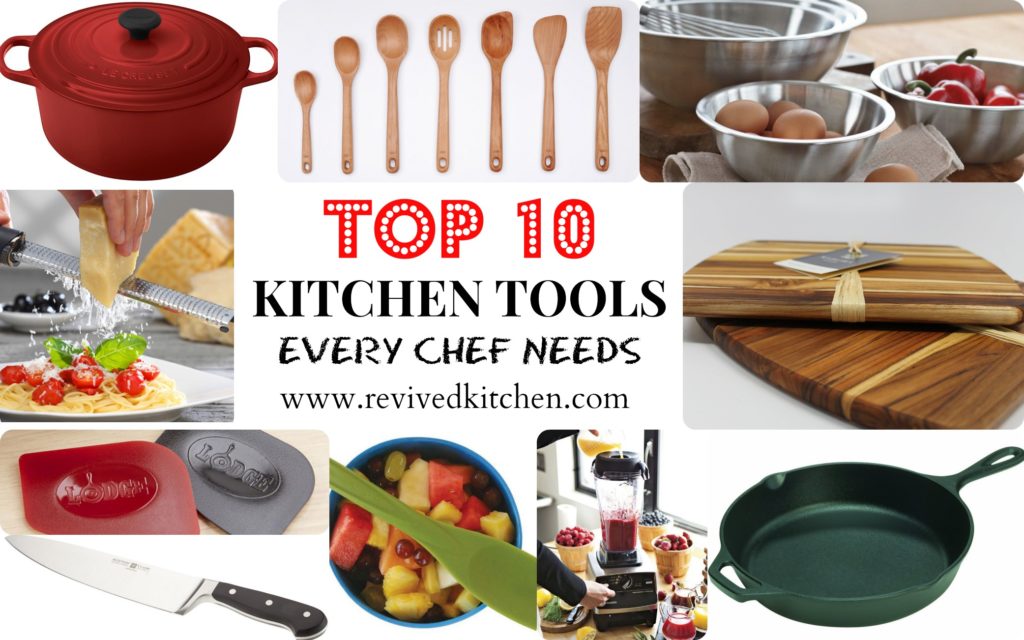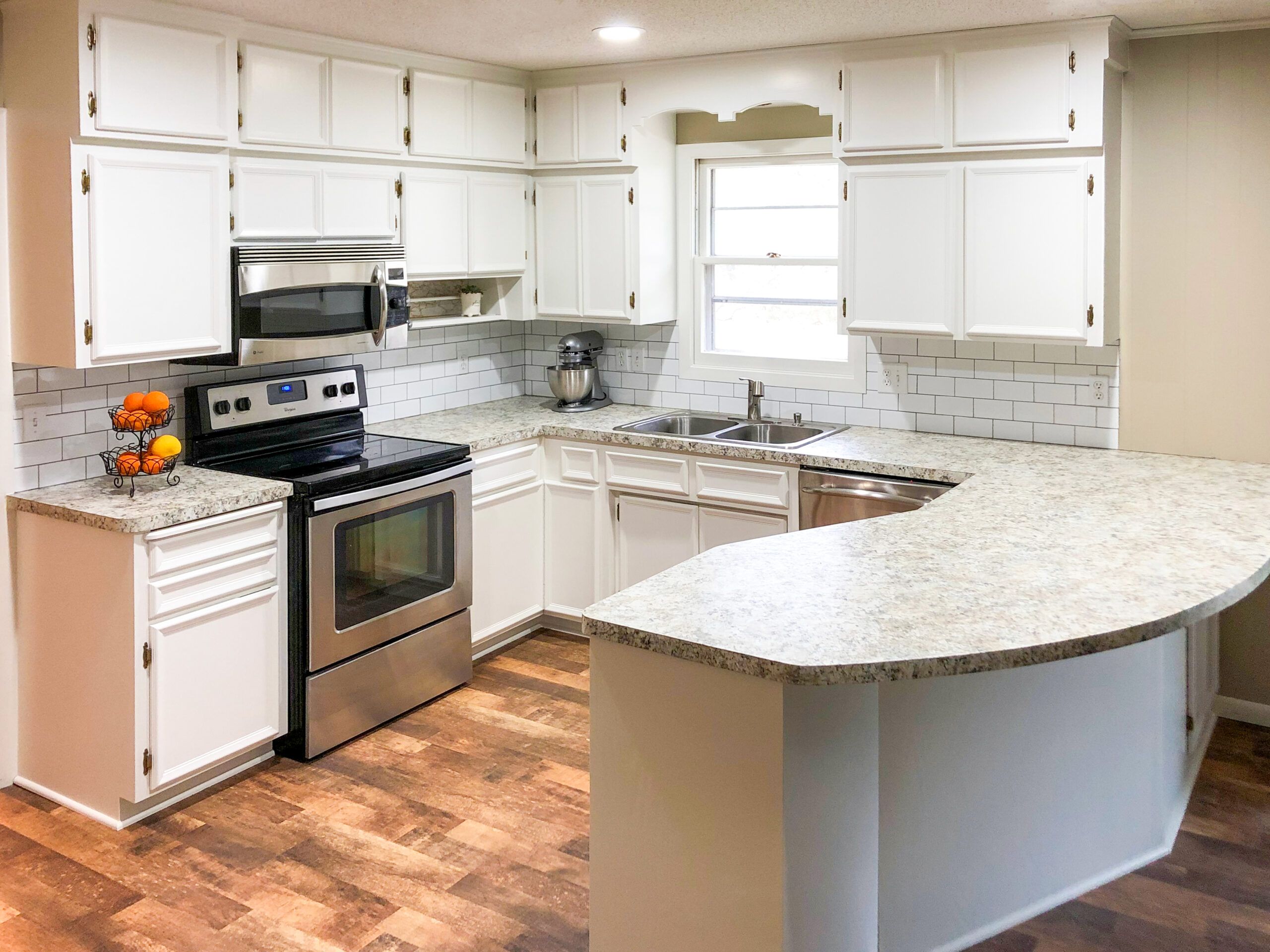Industrial kitchen design with open shelving: Forget stuffy cupboards! Imagine a kitchen where your culinary treasures are on display, a glorious testament to your discerning taste and impressive collection of artisanal olive oils. This isn’t just about storage; it’s about creating a space that’s as visually stunning as it is functional, a place where the raw beauty of industrial design meets the organized chaos of a well-loved kitchen.
We’ll delve into the aesthetic delights, the organizational strategies (yes, even open shelving can be tamed!), and the surprisingly simple maintenance involved in making this bold design choice work for you.
This guide will walk you through the exciting world of industrial kitchen design featuring open shelving, covering everything from choosing the right materials (reclaimed wood? Sleek metal? The possibilities are endless!) to mastering the art of artful arrangement.
We’ll tackle the practical considerations, like hygiene and organization, and help you navigate the costs involved in transforming your kitchen into a stunning industrial haven. Get ready to ditch the doors and embrace the exposed beauty of open shelving!
Aesthetic Considerations of Open Shelving in Industrial Kitchen Design
Open shelving in an industrial kitchen isn’t just about practicality; it’s a bold design statement. Think exposed brick, gleaming metal pipes, and… a carefully curated display of your favorite cookware and artisanal olive oil. The right shelving can elevate your kitchen from “functional” to “fabulously functional.” Let’s explore how to achieve that.
Visual Impact of Open Shelving
Open shelving in an industrial kitchen creates a sense of spaciousness and effortless cool. It allows you to showcase your prized possessions – beautiful ceramics, vintage enamelware, or that ridiculously expensive copper pot you finally splurged on. The visual impact depends heavily on the materials and arrangement.
Material Choices and Their Aesthetic Effects
The material you choose for your open shelving significantly influences the overall aesthetic. Metal shelving, especially in black or dark gray, offers a raw, industrial feel, perfectly complementing exposed brick or concrete. Reclaimed wood, on the other hand, introduces a touch of rustic warmth, softening the hard edges of the industrial style.
Sleek, polished wood provides a more contemporary twist.
Lighting and Open Shelving Display
Lighting is crucial. Poor lighting can make even the most beautiful shelving look drab. Recessed lighting, strategically placed spotlights, or even a simple pendant light above the shelving unit can dramatically enhance the display. Avoid harsh overhead lighting, which can create unwanted shadows and wash out the colors of your displayed items.
Warm, inviting lighting is key.
Open Shelving Design Variations
Here are three variations on open shelving arrangements for an industrial kitchen, showcasing different materials and lighting styles:
| Material | Lighting | Visual Impact Description | Sketch Description |
|---|---|---|---|
| Reclaimed Wood | Warm-toned pendant lights | Rustic charm, cozy atmosphere, highlights the wood grain and texture. Items displayed appear warm and inviting. | Imagine dark, slightly distressed wood shelves, with varying widths and depths, mounted against a white-washed brick wall. The pendant lights cast a soft glow on the displayed items, creating a sense of warmth. |
| Black Metal | Recessed spotlights | Modern industrial, clean lines, emphasizes the sleekness of the metal. Items displayed appear sharp and defined. | Picture a grid of black metal shelves, geometrically precise, against a backdrop of exposed brick. Spotlights accentuate the items on display, creating a dramatic effect. |
| Polished Wood and Metal Combination | LED strip lighting underneath shelves | Contemporary industrial, blend of warmth and coolness. Items are subtly highlighted, creating a sophisticated look. | Envision a combination of polished light wood shelves and black metal supports, creating a sleek and sophisticated look. Subtle LED strip lighting under the shelves creates a gentle, upward glow, highlighting the items without being overpowering. |
Functionality and Organization of Open Shelving

While open shelving offers a stylish aesthetic, its functionality hinges on effective organization. Let’s delve into maximizing both form and function.
Advantages and Disadvantages of Open Shelving
Open shelving provides easy access to frequently used items, creating a sense of openness and visual appeal. However, it requires more diligent organization and cleaning than closed cabinetry. Dust accumulation is a concern, and items must be carefully curated to maintain a visually appealing display.
Effective Organization Strategies
Strategic organization is key. Grouping similar items together (e.g., spices, baking supplies) streamlines workflow. Clear labeling helps maintain order and allows quick identification of items. Consider using uniform containers to maintain a consistent aesthetic.
Storage Solutions for Neatness and Functionality
Dividers, baskets, and tiered trays are your best friends. Dividers prevent stacks from toppling, baskets corral smaller items, and tiered trays maximize vertical space. Choose containers that complement your shelving material and overall kitchen design.
Typical Items Stored on Open Shelving
Here’s a list of items typically stored on open shelving, categorized for clarity:
- Frequently Used:Spices, oils, vinegars, everyday cooking utensils.
- Occasionally Used:Baking supplies, specialty ingredients, serving dishes.
- Decorative:Cookbooks, vintage canisters, attractive serving pieces.
Hygiene and Maintenance of Open Shelving in a Commercial Setting
Maintaining hygiene on open shelving in a busy kitchen is crucial. Let’s explore best practices for cleanliness and food safety.
Maintaining Cleanliness and Hygiene
Regular cleaning is paramount. Wipe down shelves frequently with a damp cloth and mild detergent. Thoroughly clean shelves at least once a week, paying close attention to crevices and corners. Use appropriate cleaning solutions based on the shelving material (avoid harsh chemicals on wood).
Cleaning Methods and Materials
For metal shelving, a simple solution of warm water and dish soap usually suffices. For wood, use a wood-specific cleaner to avoid damage. For concrete, a damp cloth and mild detergent will work. Always rinse thoroughly and dry completely to prevent mold or mildew growth.
Addressing Food Safety and Pest Control
Proper storage is essential for food safety. Store food in airtight containers to prevent contamination and pest infestations. Regularly inspect shelves for signs of pests and address any infestations immediately. Keep shelves clean and free of crumbs or spills to deter pests.
Proper Storage Techniques for Contamination Prevention
Store food in sealed containers to prevent contamination. Arrange items to allow for air circulation and prevent stacking that could crush or damage packages. Use separate containers for raw and cooked foods to prevent cross-contamination.
Integration of Open Shelving with Other Industrial Design Elements
Open shelving should seamlessly integrate with other industrial elements to create a cohesive design. Let’s explore how to achieve harmony.
Complementing Industrial Design Features
Open shelving complements exposed brick walls by offering a contrasting texture and color. Metal accents, such as pipe shelving or hardware, reinforce the industrial aesthetic. Concrete countertops provide a solid, grounding element that complements the raw feel of open shelving.
Integration into Different Kitchen Layouts

Open shelving can be incorporated into various kitchen layouts. In an L-shaped kitchen, it can serve as a visual divider between the cooking and dining areas. In a galley kitchen, it can maximize storage space. In a kitchen with an island, it can add visual interest and storage.
Color and Texture Harmony
Use color and texture to create visual harmony. Neutral colors (grays, blacks, whites) provide a backdrop for colorful items on display. Introduce texture through the choice of shelving material (wood, metal, concrete) and through the items displayed on the shelves.
Visual Description of an Industrial Kitchen
Imagine a kitchen with exposed brick walls painted a warm, earthy gray. Black metal pipe shelving runs along one wall, showcasing a collection of copper pots and pans. A reclaimed wood island houses a butcher block countertop, and open shelving on the island displays colorful ceramic bowls and vintage spice jars.
Recessed lighting accentuates the textures and colors, creating a warm and inviting atmosphere.
Cost Considerations and Material Selection for Open Shelving: Industrial Kitchen Design With Open Shelving
The cost of open shelving varies depending on the materials and complexity of the installation. Let’s explore cost factors and material selection.
Cost Comparison of Shelving Materials
Metal shelving is generally the most affordable option, followed by wood. Reclaimed wood can be more expensive, depending on availability and condition. Concrete shelving is typically the most expensive due to the labor and materials involved.
Factors in Material Selection, Industrial kitchen design with open shelving
Durability, maintenance, and aesthetic appeal are key factors. Metal is durable and easy to clean but can be less aesthetically versatile. Wood offers warmth and visual appeal but requires more maintenance. Concrete is durable but requires professional installation.
Sample Open Shelving Installation Cost Breakdown
This is a sample cost breakdown; actual costs may vary based on location, labor rates, and material choices:
| Item | Quantity | Unit Cost | Total Cost |
|---|---|---|---|
| Reclaimed Wood Shelves | 3 | $150 | $450 |
| Metal Brackets | 6 | $20 | $120 |
| Installation Labor | 1 day | $300 | $300 |
| Total | $870 |
Ultimate Conclusion
So, there you have it – a blueprint for creating an industrial kitchen that’s as stylish as it is functional. Open shelving, once a daring design choice, is now a celebrated element, adding character and a touch of industrial chic.
Remember, the key is balance: a carefully curated display, a touch of rustic charm, and a dash of organizational genius. With a little planning and a lot of creativity, your industrial kitchen with open shelving can become the heart of your home, a space where culinary artistry meets industrial aesthetics in perfect harmony.
Expand your understanding about how to paint a nursery with a space theme with the sources we offer.
Now go forth and create your masterpiece!
Quick FAQs
What are the best cleaning products for open shelving?
Gentle cleaners are best! Avoid harsh chemicals that could damage the finish. For wood, a damp cloth is often sufficient. Metal shelves can be cleaned with a mild soap and water solution.
How do I prevent pests from getting into my open shelving?
Airtight containers are your best friend! Keep food properly sealed and stored. Regular cleaning and the use of pest control measures (if necessary) will also help.
Can open shelving work in a small kitchen?
Absolutely! Strategic placement and careful organization are key. Consider using slim shelves and maximizing vertical space.
What if I have a lot of kitchenware?
Clever storage solutions like baskets, dividers, and tiered shelving can maximize space and keep everything organized even with a large collection.




